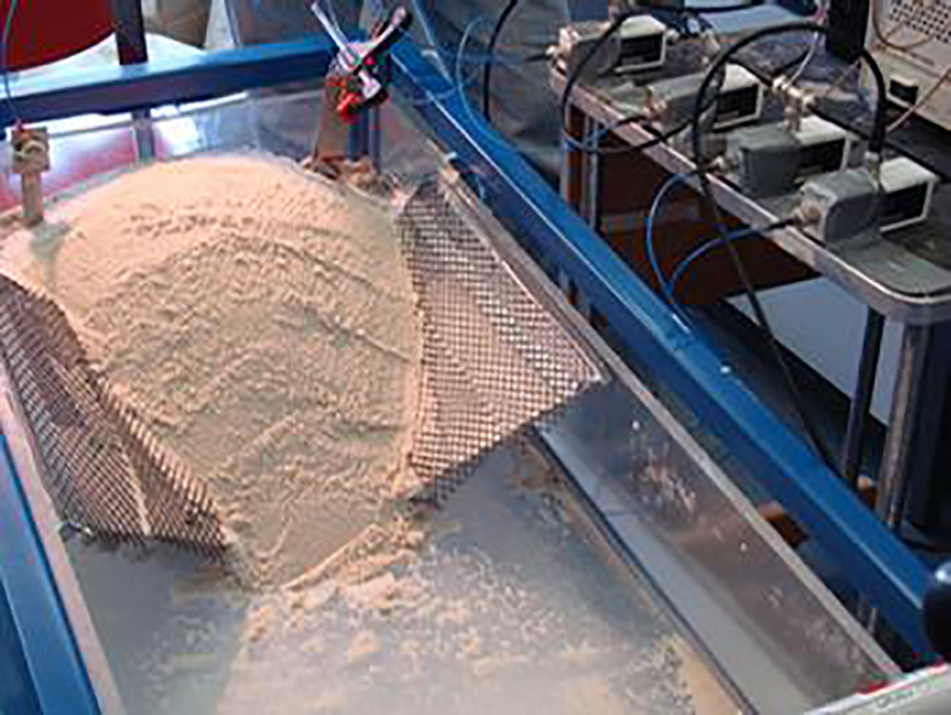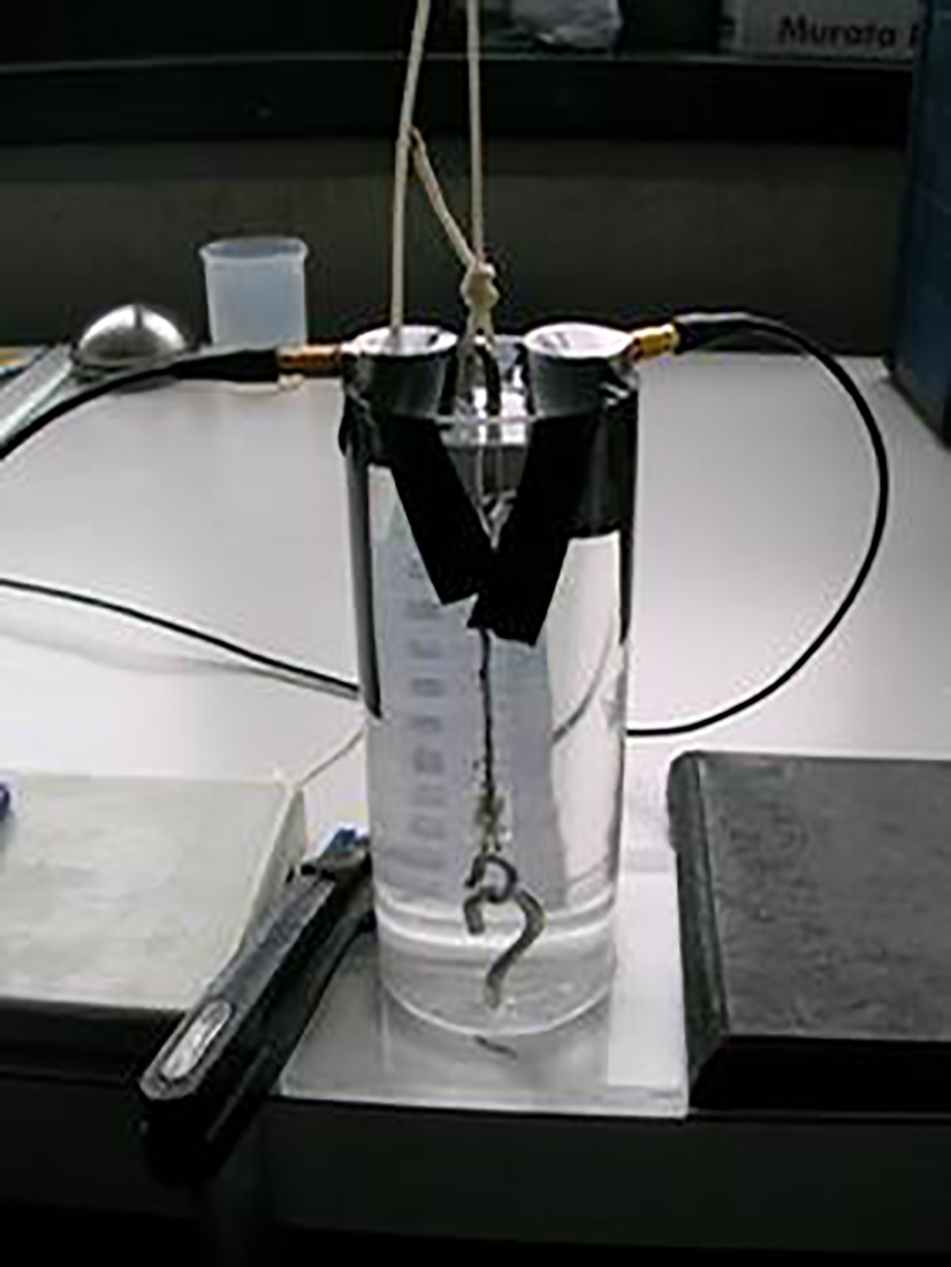Acoustic Emission for Landslide Detection
Landslides are difficult to predict in part due to the heterogeneity of the system and to uncertainties associated with triggering mechanisms. As part of a four-year project of the Competence Center Environment and Sustainability (CCES), precursory signals to global failure will be studied with acoustic emissions sensors. Acoustic emissions are short lived, high frequency, elastic waves generated by the rapid release of stored energy. Sliding friction and rolling between grains are sources of acoustic emissions. Numerous studies of ruptures in rock mechanics indicate that the acoustic emission magnitude-frequency signature changes prior to global failure. In soils, detections of acoustic emissions is challenging because granular materials attenuate the signal significantly. Waveguides that propagate the signal from its source in the soil to the sensors are necessary. An acoustic emission system designed specifically for soils and granular materials will be used to monitor acoustic emissions during the onset of slope failure to elucidate whether such a precursory signal is detectable and whether AE signature can provide the basis for a detection and early warning system for landslides
Our objective is to use acoustic emissions (AE) to study the progressive development of local to global slope failure triggered by rainfall. The frequency-amplitude relationship of acoustic emission signals may have a different signature before the onset of global failure and thus could provide the basis for a detection and early warning system. To interpret AE wave characteristics recorded in the field, laboratory experiments where sands and soils are brought to failure in a tilting box (Figure 1 and 2) are planned to understand AE source mechanisms and AE signatures during failure. Figure 3 shows acoustic emission signals during failure of wet sand in a box. Additional experiments are also planned to understand the mechanisms of root reinforcements in soils (Figure 4) and acoustic emissions from the ruptures of roots.

Figure 1: Tilting box with wet sand and acoustic emission system. Figure 2: Sand after failure.

Figure 3: (a) Voltage recorded by an acoustic emission sensor. (b) Details of time series prior to failure. Notice the change in behavior of the signal after failure. Different signature probably reflects grain rolling.

Figure 4: Simple setup to test acoustic emissions from root rupture..
More Information
What are acoustic emissions? Acoustic emissions (AE) are transient, high-frequency, elastic waves generated by the rapid release of stored elastic energy. In brittle materials like rocks, crack formation and crack propagation generate AE. In granular materials, frictional sliding and rolling are sources of AE. Another source of AE is the breaking of roots. AE are produced by grain-scale processes resulting in source-event sizes that are sub- mm to mm in size giving rise to signals with frequencies in the range of 10 kHz to several MHz. In contrast, classical seismology is interested in the study of earthquakes and deals with dimensions from 1 meter to several kilometers with frequencies below a few tens of hertz. Principles, however, are the same.
Why acoustic emissions? Acoustic emissions carry information about location, intensity, and deformation mechanisms occurring in a material. It is non-invasive and gives real-time information on what is happening during deformation. In rock mechanics, AE monitoring has been successfully used to identify various stages of the failure process, such as crack initiation, crack growth, and crack propagation prior to global failure. Also, AE frequency- magnitude statistics are scale-free (power-law), like the Gutenberg-Richter law for Earthquakes. Changes in AE signatures and statistics give information about the failure process.
How to measure acoustic emissions? Frictional sliding and rolling of grains produces acoustic emissions. Acoustic emissions travel through the medium and are captured by AE sensors positioned on the boundary of the material. AE sensors contain a piezoelectric ceramic that transforms the pressure wave into an electrical signal. Signal processing, such as counting threshold crossings or computing the energy of the acoustic emission source, gives information about processes and mechanisms of deformation.
Challenges:
Attenuation: A difficulty in measuring acoustic emissions in granular materials is the high attenuation of the source signal. High frequencies are more attenuated than lower ones. To remedy this problem, acoustic emission sensors are usually coupled to a waveguide that is buried into the granular material. Several types of waveguide exist: passive waveguides which only transmit the signal from the soil to the sensor (e.g. solid steel waveguide) and active waveguides which generate AE in response to deformation of the waveguide itself. Precursory signatures: Several studies have indicated that the power-law exponent of AE/seismic frequency-magnitude relationship decreases prior to global failure (for example, the field experiments on chalk cliffs of Amitrano et al. (2005)). In brittle materials, such as chalk, the detection of a precursory signature using acoustic emissions is feasible. The challenge is to be able to detect such changes prior to global failure in a granular material such as a soil.
Team: Dani Or
Funding: Competence Center Environment and Sustainability
Contact:
